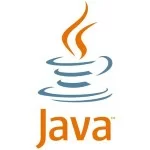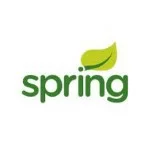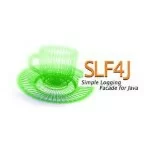Using Maven Jetty plugin
Although I am using Maven since a long time I never used the Jetty plugin until recently. To be able to test a REST client I created a servlet which showed me all incoming parameters and headers with the incoming request. To run the servlet in a container I decided to give the Maven Jetty plugin a go. So first I create a web application by using the specific Maven archetype:
1 | mvn archetype:generate -DgroupId=net.pascalalma -DartifactId=rest-service -Dversion=1.0.0-SNAPSHOT -DarchetypeArtifactId=maven-archetype-webapp |
This results in the complete project and the following logging:
01 02 03 04 05 06 07 08 09 10 11 12 13 14 15 16 17 18 19 20 21 22 23 24 25 26 27 28 29 30 31 32 33 34 35 36 37 38 39 40 41 42 43 44 | [INFO] Scanning for projects...[INFO] [INFO] ------------------------------------------------------------------------[INFO] Building Maven Stub Project (No POM) 1[INFO] ------------------------------------------------------------------------[INFO] [INFO] >>> maven-archetype-plugin:2.2:generate (default-cli) @ standalone-pom >>>[INFO] [INFO] <<< maven-archetype-plugin:2.2:generate (default-cli) @ standalone-pom <<<[INFO] [INFO] --- maven-archetype-plugin:2.2:generate (default-cli) @ standalone-pom ---[INFO] Generating project in Interactive modeDownloading: http://artifactory.redstream.nl/repo/org/apache/maven/archetypes/maven-archetype-webapp/1.0/maven-archetype-webapp-1.0.jarDownloaded: http://artifactory.redstream.nl/repo/org/apache/maven/archetypes/maven-archetype-webapp/1.0/maven-archetype-webapp-1.0.jar (4 KB at 5.2 KB/sec)Downloading: http://artifactory.redstream.nl/repo/org/apache/maven/archetypes/maven-archetype-webapp/1.0/maven-archetype-webapp-1.0.pomDownloaded: http://artifactory.redstream.nl/repo/org/apache/maven/archetypes/maven-archetype-webapp/1.0/maven-archetype-webapp-1.0.pom (533 B at 1.1 KB/sec)[INFO] Using property: groupId = net.pascalalma[INFO] Using property: artifactId = rest-service[INFO] Using property: version = 1.0.0-SNAPSHOT[INFO] Using property: package = net.pascalalmaConfirm properties configuration:groupId: net.pascalalmaartifactId: rest-serviceversion: 1.0.0-SNAPSHOTpackage: net.pascalalma Y: : Y[INFO] ----------------------------------------------------------------------------[INFO] Using following parameters for creating project from Old (1.x) Archetype: maven-archetype-webapp:1.0[INFO] ----------------------------------------------------------------------------[INFO] Parameter: groupId, Value: net.pascalalma[INFO] Parameter: packageName, Value: net.pascalalma[INFO] Parameter: package, Value: net.pascalalma[INFO] Parameter: artifactId, Value: rest-service[INFO] Parameter: basedir, Value: /Users/pascal/projects[INFO] Parameter: version, Value: 1.0.0-SNAPSHOT[INFO] project created from Old (1.x) Archetype in dir: /Users/pascal/projects/rest-service[INFO] ------------------------------------------------------------------------[INFO] BUILD SUCCESS[INFO] ------------------------------------------------------------------------[INFO] Total time: 13.057s[INFO] Finished at: Sun Feb 03 17:13:33 CET 2013[INFO] Final Memory: 7M/81M[INFO] ------------------------------------------------------------------------MacBook-Air-van-Pascal:projects pascal$ |
Next I added the servlet code to the project:
01 02 03 04 05 06 07 08 09 10 11 12 13 14 15 16 17 18 19 20 21 22 23 24 25 26 27 28 29 30 31 32 33 34 35 36 37 38 39 40 41 42 43 44 45 46 47 48 49 50 51 52 53 54 55 56 57 58 59 | package net.pascalalma.servlets;import java.io.IOException;import java.io.PrintWriter;import java.util.Enumeration;import javax.servlet.ServletException;import javax.servlet.http.HttpServlet;import javax.servlet.http.HttpServletRequest;import javax.servlet.http.HttpServletResponse;/** * * @author pascal */public class TestRestServlet extends HttpServlet { public void doGet(HttpServletRequest request, HttpServletResponse response) throws ServletException, IOException { PrintWriter out = response.getWriter(); out.println('GET method called'); out.println('parameters:\n ' + parameters(request)); out.println('headers:\n ' + headers(request)); } public void doPost(HttpServletRequest request, HttpServletResponse response) throws ServletException, IOException { PrintWriter out = response.getWriter(); out.println('POST method called'); out.println('parameters: ' + parameters(request)); out.println('headers: ' + headers(request)); } public void doDelete(HttpServletRequest request, HttpServletResponse response) throws ServletException, IOException { PrintWriter out = response.getWriter(); out.println('Delete method called'); } private String parameters(HttpServletRequest request) { StringBuilder builder = new StringBuilder(); for (Enumeration e = request.getParameterNames(); e.hasMoreElements();) { String name = (String) e.nextElement(); builder.append('|' + name + '->' + request.getParameter(name)+'\n'); } return builder.toString(); } private String headers(HttpServletRequest request) { StringBuilder builder = new StringBuilder(); for (Enumeration e = request.getHeaderNames(); e.hasMoreElements();) { String name = (String) e.nextElement(); builder.append('|' + name + '->' + request.getHeader(name)+'\n'); } return builder.toString(); }} |
And configure the servlet in the ‘web.xml’. By the way the generated ‘web.xml’ wasn’t able to be shown in my Netbeans version (v7.2.1). I got the message:
Web application version is unsupported. Upgrade web.xml to version 2.4 or newer or use previous version of NetBeans
To fixed this I modified the web.xml so it starts with the following declaration of namespaces:
1 2 3 4 5 | xsi:schemaLocation='http://java.sun.com/xml/ns/javaee |
Next add the servlet to the modified ‘web.xml’:
01 02 03 04 05 06 07 08 09 10 11 12 | <?xml version='1.0' encoding='UTF-8'?>... <display-name>Archetype Created Web Application</display-name> <servlet> <servlet-name>TestRestServlet</servlet-name> <servlet-class>net.pascalalma.servlets.TestRestServlet</servlet-class> </servlet> <servlet-mapping> <servlet-name>TestRestServlet</servlet-name> <url-pattern>/TestRestServlet</url-pattern> </servlet-mapping>... |
Now everything is ready to test the servlet. As I said before I am going to use the Jetty plugin for this. To add the plugin to the project simply put the following in your ‘pom.xml’:
01 02 03 04 05 06 07 08 09 10 11 12 13 14 | <plugins> <plugin> <groupId>org.mortbay.jetty</groupId> <artifactId>jetty-maven-plugin</artifactId> <configuration> <scanIntervalSeconds>10</scanIntervalSeconds> <contextPath>/</contextPath> <scanIntervalSeconds>10</scanIntervalSeconds> <stopKey>STOP</stopKey> <stopPort>8005</stopPort> <port>8080</port> </configuration> </plugin></plugins> |
Now I can run the command ‘mvn jetty:run’ in my terminal to have the container running the servlet. The log should end with something like:
1 2 3 4 | ....2013-02-19 09:54:53.044:INFO:oejs.AbstractConnector:Started SelectChannelConnector@0.0.0.0:8080[INFO] Started Jetty Server[INFO] Starting scanner at interval of 10 seconds.</code> |
Now if you open a browser and go to the this url ‘http://localhost:8080/TestRestServlet?bla=true’ you will see the servlet in action and outputting to the browser:
1 2 3 | GET method calledparameters:|bla->true |
01 02 03 04 05 06 07 08 09 10 | headers:|DNT->1|Host->localhost:8080|Accept->text/html,application/xhtml+xml,application/xml;q=0.9,*/*;q=0.8|Accept-Charset->ISO-8859-1,utf-8;q=0.7,*;q=0.3|Accept-Language->en-US,en;q=0.8|User-Agent->Mozilla/5.0 (Macintosh; Intel Mac OS X 10_7_5) AppleWebKit/537.17 (KHTML, like Gecko) Chrome/24.0.1312.57 Safari/537.17|Connection->keep-alive|Cache-Control->max-age=0|Accept-Encoding->gzip,deflate,sdch |
One note: As you can see in the plugin configuration I have added a few extra parameters for my convenience. So will the container check every 10 seconds for changes in the servlet, so I don’t have to restart the Jetty container after each change of the servlet. To stop the container you can now enter the command ‘mvn jetty:stop -DstopPort=8005 -DstopKey=STOP’ in another terminal session. By the way, make sure you name the plugin ‘jetty-maven-plugin’ and not ‘maven-jetty-plugin’ because then you will be using an old version of the plugin which doesn’t pickup the configuration parameters (yes, very confusing and frustrating as I found out).
Reference: Using Maven Jetty plugin from our JCG partner Pascal Alma at the The Pragmatic Integrator blog.






Worked perfectly for me! Thanks!